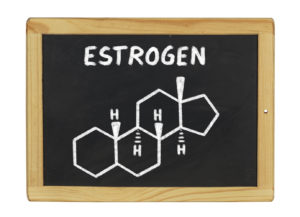
Diagnosed with Cancer? Your two greatest challenges are understanding cancer and understanding possible side effects from chemo and radiation. Knowledge is Power!
Learn about conventional, complementary, and integrative therapies.
Dealing with treatment side effects? Learn about evidence-based therapies to alleviate your symptoms.
Click the orange button to the right to learn more.
- You are here:
- Home »
- Blog »
- side effects ID and prevention »
- Breast Cancer- No Longer Declining
Breast Cancer- No Longer Declining

“A sharp decline in breast cancer incidence rates among non-Hispanic white women in the U.S. after a dramatic drop in the use of postmenopausal hormone therapy did not continue through 2007, according to a new study
It is tough for me to understand the facts behind this article because I do not have access to the journal “Cancer Epidemiology, Biomarkers & Prevention: A Publication of the American Association for Cancer Research.” This is not the first time I have been unable to get to an interesting article I wanted to read from this journal.
I do have a link to the abstract (http://www.ncbi.nlm.nih.gov/pubmed/21357727) but it does not seem to say anything particularly important other than the fact that the decline due to the use of estrogen replacement therapy has stabilized.
If I were to interject something that is simply a gut feeling, it would be that there are many other sources of estrogen in our environment besides HRT which continue to fuel breast cancer. Many chemicals have estrogenic effects. We can avoid some chemicals, but certainly not all of them. Animals we eat are injected with estrogen. When we are overweight we produce our own excess estrogen.
And, all of what I just said is dependent on the notion that estrogen causes all breast cancer, and this is simply not true. We don’t know for sure what causes breast cancer, especially the kind that is not fueled by estrogen.
Mary Miller-Breast Cancer Profile in Courage
Breast cancer incidence rates no longer declining in US women
“A sharp decline in breast cancer incidence rates among non-Hispanic white women in the U.S. after a dramatic drop in the use of postmenopausal hormone therapy did not continue through 2007, according to a new study from the American Cancer Society and the National Cancer Institute. While there are several possible explanations for the recent stabilization, it may indicate that the decrease in breast cancers thought to be related to postmenopausal hormone use has bottomed out.
The study appears online in Cancer Epidemiology Biomarkers and Prevention and will appear in a future print issue.
Breast cancer incidence rates among U.S. white women dropped by about 7% between 2002 and 2003 after a dramatic drop in the use of postmenopausal hormone therapy (HT) prompted by the Women’s Health Initiative (WHI) study findings in July 2002 on the adverse health effects of combined HT use, including increased risk of breast cancer. To see if that trend continued, researchers led by Carol DeSantis, MPH reviewed data on female invasive breast cancer incidence obtained from the National Cancer Institute’s Surveillance, Epidemiology and End Results (SEER) 12 registries for the years 2000-2007.
They found the sharp decline in breast cancer incidence rates in non-Hispanic white women between 2002 and 2003 did not continue between 2003 and 2007. There was no significant change in the overall incidence rate for breast cancer among non-Hispanic white women during those years. Meanwhile, non-Hispanic Black and Hispanic women did not experience the steep drop in incidence from 2002-2003 and there were no significant changes in incidence rates among those groups from 2003-2007.
The authors say there are several possible explanations for the recent stabilization in breast cancer incidence rates among non-Hispanic white women in the U.S.
- First, although the report indicates that postmenopausal HT use has continued to decline through 2008, the decrease in HT use after 2003 may not have been large enough to continue delaying diagnoses.
- Second, the trends may reflect the improved sensitivity of mammography without the influence of HT, since HT increases breast density and compromises the diagnostic performance of mammograms and breast biopsies.
- Also, the rates may in part reflect the relatively stable rates of screening mammography in the U.S. since 2000. Increasing screening rates would have likely increased the number of diagnoses.


